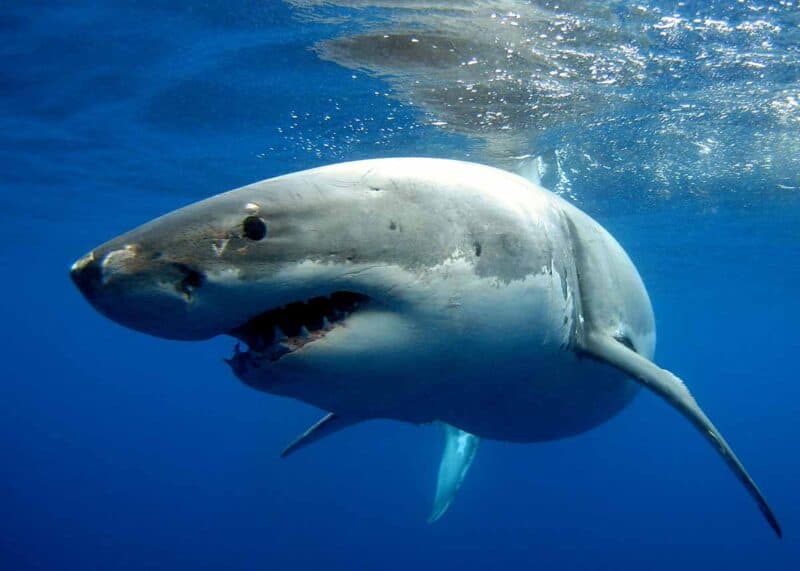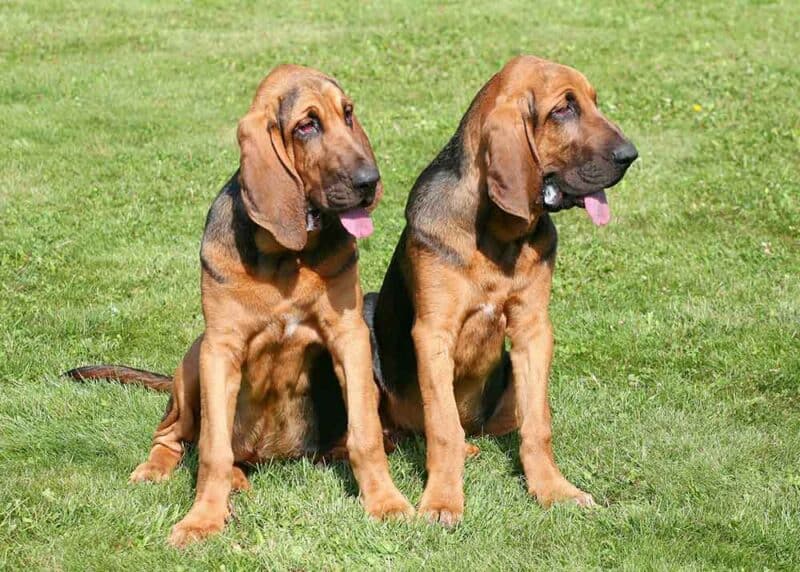Some animals are famous for their sense of smell. For hunting, mating, or evading predators, a sense of smell is vital. Which animal has the best sense of smell?
And the award for the best sense of smell goes to the African elephant. They can smell water up to 12 miles (19 km) away. Other animals with a great sense of smell include great white sharks, giant pouched rats, kiwi, and the Eastern American Mole.

Every animal has unique senses and traits that keep them alive and fed. While humans rely on sight and hearing, many animals use a keen sense of smell instead.
Today, we’ll learn which animal has the best sense of smell.
Table of Contents
12 Animals With the Best Sense of Smell
Are you ready to learn more about what animal has the best sense of smell? We’ve compiled a list of 12 animals with the best sense of smell.
Let’s get sniffing.

1. African Elephant
Thanks to recent studies, many scientists now rate the African elephant as the animal with the best sense of smell.
Researchers found that African elephants have the largest number of olfactory receptor genes. With over 2,000 genes related to smell, the elephant beats every other animal’s sense of smell.
An elephant’s keen sense of smell is vital for survival in Africa. Thanks to their long trunk and sense of smell, elephant herds can avoid danger and find food and water sources. Elephant researchers followed elephants up to 12 miles (19.2 km) as they searched for water sources.

2. Great White Shark
Almost all sharks depend on their sense of smell for survival. In particular, the great white shark’s sense of smell makes it one of the deadliest predators on the planet.
A shark’s sense of smell dates back to the time of the dinosaurs. This perfect evolutionary trait lets a great white shark sense a single drop of blood from up to ⅓ of a mile (0.5 km).
Their excellent sense of smell lets a great white shark use the element of surprise to find its next meal.

3. Black Bear
Bears have an incredible sense of smell and can detect scents from miles away. The nose of a North American black bear is huge and features a nasal mucosa 300 times greater than a human’s.
Inside a bear’s nose, are thousands of receptors that can easily find food. There are reports of black bears traveling over 20 miles to locate the carcass of a deceased animal.
A bear’s sense of smell often causes dangerous situations for campers. If you plan on camping outdoors in bear country, you should always use odor-proof bags for your food and trash. Otherwise, you might find yourself face-to-face with a hungry bear. Here are some tips for keeping bears away while camping.
Bears are one of many animals that hibernate in winter.

4. Snakes
Snakes have poor eyesight and hearing. Luckily, they make up for these shortcomings with their keen sense of smell. Instead of a nose, a snake uses a pair of organs in its mouth called the Jacobson’s organ or vomeronasal organ.
A snake flicks its tongue to pick up a scent. The tongue finds scents in the air and lets a snake stay on the trail of its prey. During the hunt, snakes flick their tongue at least every second.
The scent on the tongue reaches Jacobson’s organ, and that information is instantly relayed to the snake’s brain. This makes it easy for the snake to continue on the hunt for its prey.
5. Kiwi
Kiwi birds have poor eyesight, but they make up for this shortcoming with their incredible sense of smell and touch. Their keen sense of smell helps the kiwi find earthworms and insects much easier.
Kiwis have a long, thin beak. You’ll find the kiwi’s nostrils at the tip of the beak.
Along with its oversized olfactory bulb, the nostrils are great at locating food beneath soil and leaves.

6. African Giant Pouched Rat
African giant pouched rats have an incredible sense of smell. It’s so effective that scientists train these rats to detect illness. Scientists use these rats in Africa to sniff out tuberculosis and land mines.
Scientists found that African rats have 1,207 olfactory receptors. This gives the animal its amazing sense of smell. They are highly sensitive to smells and can detect chemical changes in the atmosphere.
Combined with their nose, rats also have a second smell organ called the vomeronasal organ beside the septum.

7. Bloodhound
While all dogs have a good sense of smell, the bloodhound is the top dog. A bloodhound’s sense of smell is so reliable its results are admissible evidence in a court of law.
Estimated to have 40 times the number of olfactory cells of a human, some bloodhounds have followed scent trails of over 130 miles.
They also retain smells for up to 300 hours. These talents make the bloodhound the best dog breed for finding missing persons and police work.
Learn more about other animals that sweat to cool down.
8. Turkey Vulture
Turkey vultures are the only scavenger birds that can’t kill their prey. This means they need to locate a carrion to eat and survive. Luckily, turkey vultures have an extraordinary sense of smell and can locate carrion from over a mile away.
Thanks to their large naval cavity and olfactory bulb, turkey vultures have twice as many mitral cells to relay information to their brains. This means they are four times as effective as black vultures while searching for food.
9. Male Silkmoth
Even though they lack noses, male silkmoths have an excellent sense of smell. Instead of a nose, a silk moth uses antennae to detect the scents.
Female silkmoths release a pheromone chemical to attract the males. The male moth has fine-tuned antennae that are 70% more sensitive than the females. This lets the moth detect female scents from up to 7 miles away.
10. Basset Hound
Not to be outdone by the bloodhound, the basset hound also has a keen sense of smell.
Smaller and lower to the ground, a basset hound uses its floppy airs to sweep scents into its nose. The smell is then trapped in the wrinkles on their neck and face to help them keep the scent trail. This technique makes basset hounds ideal dogs for hunting and tracking.
Thanks to their keen sense of smell and tracking ability, basset hounds now have an entire industry of tracking events they can participate in.
11. Cow
While cows don’t need to hunt or search for prey, they still have a great sense of smell.
Cows instead use their sense of smell to avoid danger. Researchers estimate cows can sense smells up to six miles away.
A cow can smell dung or urine from other cows that are stressed or in danger. This helps them leave the location and avoid predators.
Cows also use their sense of smell to locate food and water sources.
Learn more about other animals that eat grass.
12. Eastern American Mole
The Eastern American mole is nearly blind. This makes a keen sense of smell vital for survival.
The Eastern American mole has the ability to smell in stereo. This means it can use each nostril to smell independently. Thanks to this technique, the mole senses the location a scent comes from.
Their stereo sense of smell helps them quickly locate and avoid potential predators.
Questions About Animals and Their Sense of Smell
Her are some of the most common questions asked about animals and their sense of smell.
Can animals communicate with smell?
Many animals use their sense of smell to attract mates, while others can sense danger from smelling the dung or urine of other animals.
Animals also mark their territory to warn other animals to stay away from their homes.
Can animals smell fear?
If you’re afraid of dogs, you may have heard a dog owner say the dog can smell your fear. But is this true? While dogs and other animals can pick up fear pheromones, most scientists agree that communication is only possible between animals of the same species.
Can animals smell diseases?
Research shows that many animals are effective at sniffing out diseases. As stated above, rats can sniff out tuberculosis. Dogs and cats are also trained to detect sickness and diseases in humans as well.
More reading: 25 Animals that Mate for Life
Your Turn
Which animals sense of smell is most impressive to you? Did I miss one? Let me know in the comments!
Drew Haines is an animal enthusiast and travel writer. She loves to share her passion through her writing.
She graduated high school at sixteen and started her own business, Everywhere Wild Media. And she runs Everywhere Wild and JustBirding. She also guest blogs on Storyteller.Travel
She lived in Ecuador for 6 years and explored the Galapagos Islands. Currently based in N.S., Canada.
